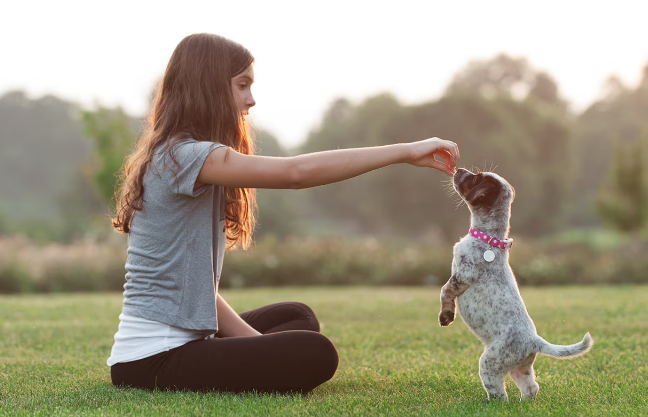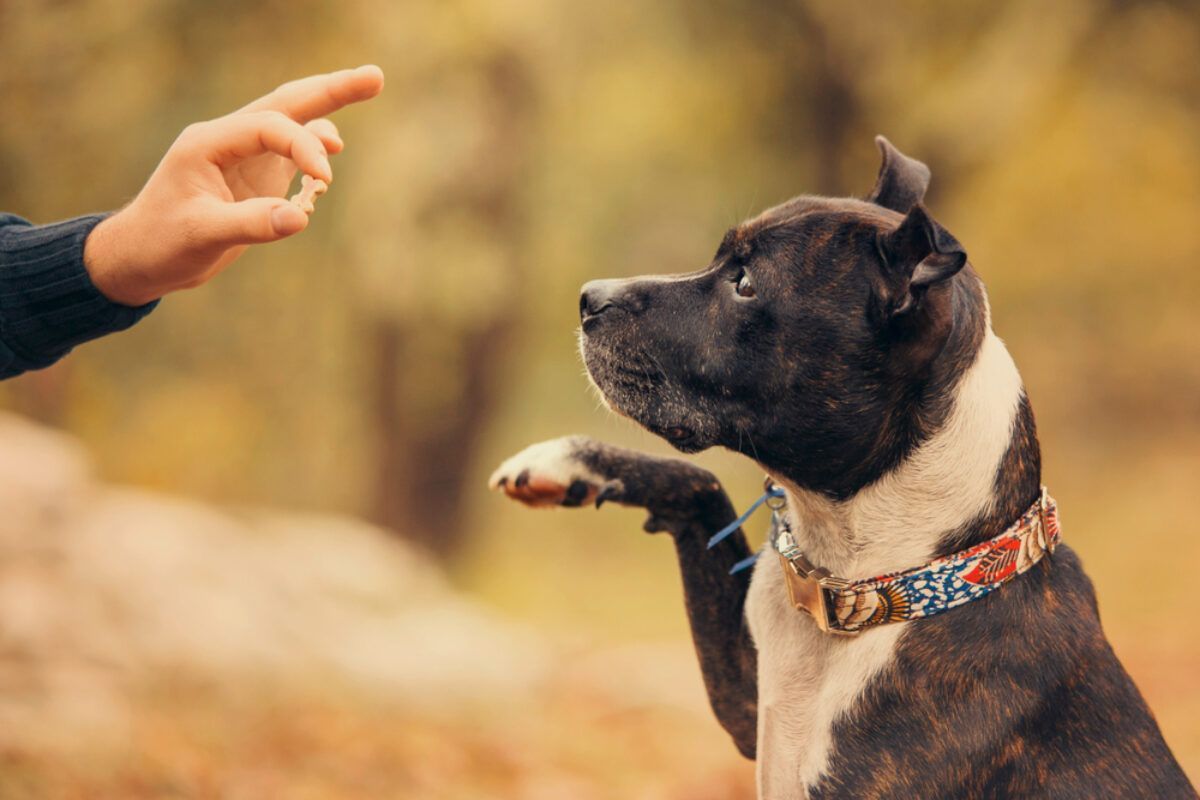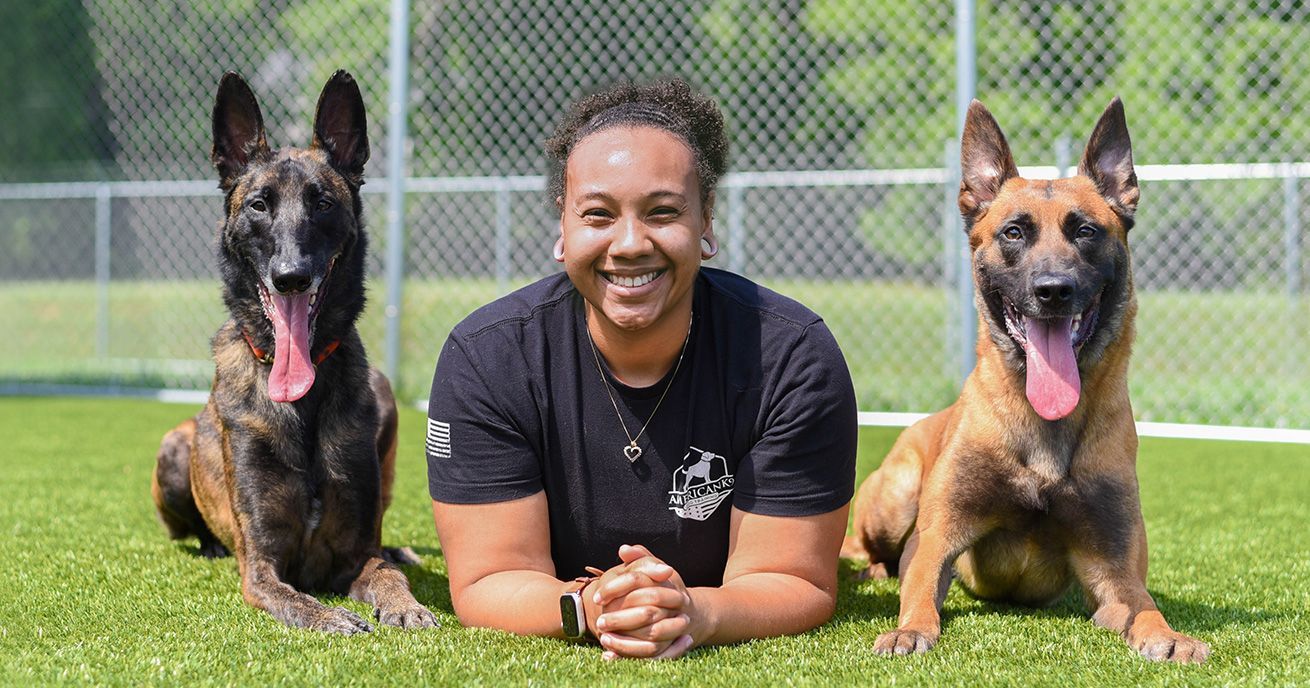Positive Reinforcement vs. Traditional Training: Which Works Best?
K9 Positive Reinforcement and Traditional Training Explained
Training your dog is an essential part of pet ownership. It shapes their behavior, enhances their quality of life, and strengthens your bond. When it comes to training methods, there are two primary approaches: positive reinforcement and traditional training. While both can be effective, they differ significantly in philosophy and execution. Let’s explore each method and determine which one works best for your dog.
Positive reinforcement is a training method that rewards desired behaviors to encourage repetition. When your dog performs a behavior you want to reinforce, you immediately reward them with something they enjoy, such as treats, praise, or playtime. For example, if you’re teaching your dog to sit, you would reward them as soon as they follow the command. This creates an association between sitting and a positive outcome, motivating your dog to repeat the behavior.
Benefits of Positive Reinforcement:
- Builds trust and a strong bond: This method fosters a positive relationship between you and your dog.
- Boosts confidence: Dogs learn without fear, encouraging them to try new things.
- Works for all dogs: It’s effective for puppies, adult dogs, and those with behavioral challenges.
- Leads to lasting results: Positive experiences help dogs retain training over the long term.
What Is Traditional Training?
Traditional training, often referred to as correction-based training, relies on discipline to discourage unwanted behaviors. It typically involves using negative reinforcement or punishment, such as leash corrections, verbal reprimands, or physical cues. For instance, if a dog pulls on the leash, a traditional trainer might use a sharp tug to correct the behavior. The dog learns to associate pulling with an unpleasant consequence, reducing the likelihood of repetition.
Benefits of Traditional Training
- Yields quick results: Traditional methods can address some behaviors efficiently.
- Effective in specific scenarios: In high-stakes environments, such as with police or service dogs, traditional training may provide immediate results.
Speak With A Dog
Training Expert
Speak With A Dog Training Expert
Thank you for contacting us!
We will contact you shortly!
Please try again later.

Winter Protection: Keeping Your Dog Comfortable Outdoors
Winter brings chilly temperatures, icy sidewalks, and shorter days, posing unique challenges for our furry friends. While some dogs love playing in the cold, others may struggle with the cold, especially if you live in an area with ice and harsh weather conditions. As responsible dog owners, it’s essential to know how to keep our pets safe, warm, and healthy during the colder months.
When temperatures drop, your dog’s fur may not always be enough to keep them warm. Small breeds, short-haired dogs, puppies, and senior dogs are especially vulnerable to cold weather. Investing in proper winter gear can make outdoor walks safer and more enjoyable. Dog coats and sweaters act as an insulating layer, helping your dog retain body heat. Choose a coat that covers their neck and belly and fits snugly without restricting movement.
Speak With A Dog
Training Expert
Speak With A Dog Training Expert
Thank you for contacting us!
We will contact you shortly!
Please try again later.
Paw protection is equally important. If applicable to your area, sidewalk salt, de-icing chemicals, and sharp ice can damage your dog’s sensitive paw pads. Dog booties provide an excellent protective barrier, but not all dogs will tolerate them. If your dog refuses to wear booties, apply a pet-safe paw balm before walks to protect their pads from cracking and irritation. After every outing, wipe your dog's paws with a warm, damp cloth to remove salt, ice, and chemicals. Monitoring your dog’s outdoor time is crucial. In freezing temperatures, limit walks to shorter durations and watch for signs of discomfort like shivering, paw lifting, or slowing down. Dogs can also suffer from hypothermia and frostbite, so always pay attention to their behavior in the cold. By outfitting your dog with proper gear and caring for their paws, you can ensure safe and enjoyable winter adventures.


Indoor Comfort and Nutrition: Supporting Your Dog’s Health in Winter
Winter isn’t just about outdoor safety–indoor care is equally important. Just like us, dogs appreciate a warm and cozy space when temperatures plummet. Provide your dog with a comfortable bed in a draft-free area. An elevated or insulated bed can help keep them off cold floors, while extra blankets offer additional warmth. Be mindful of space heaters, as dogs may accidentally knock them over or get too close and burn themselves.
Your dog’s diet and hydration may also need adjustments in winter. If your dog is active outdoors, they might burn extra calories to stay warm, so a slight increase in their food intake could be beneficial. On the other hand, dogs that spend most of their time indoors may require careful monitoring to avoid winter weight gain.
Comparing Positive Reinforcement and Traditional Training
1. Learning Environment
Positive reinforcement creates a stress-free learning experience. Dogs learn because they’re motivated by rewards, not because they fear punishment. Conversely, traditional training can create stress or anxiety, especially if corrections are harsh or mistimed.
2. Behavioral Outcomes
Dogs trained with positive reinforcement are more likely to retain their training and exhibit consistent behavior. Traditional training may suppress unwanted behaviors temporarily but might not address the root cause, leading to recurrence.
3. Emotional Impact
Positive reinforcement builds trust and fosters a stronger bond with your dog. In contrast, traditional training can strain the relationship if your dog associates you with negative experiences.
4. Flexibility
Positive reinforcement works for all breeds, ages, and temperaments. Traditional training may not be effective for sensitive dogs or those with a history of trauma.
Which Training Method Works Best?
While traditional training has its place in specific scenarios, positive reinforcement is widely regarded as the superior method for most dogs. Backed by modern animal behavior science, it prioritizes kindness, cooperation, and motivation. Dogs thrive in a safe and encouraging environment. Positive reinforcement taps into their natural desire to please, making training a rewarding experience for both of you. While traditional training can yield quick results, it often lacks the long-term benefits and emotional well-being that positive reinforcement provides.
In some cases, a balanced approach may be necessary. For example, a mild correction could help redirect a dog during dangerous situations, such as chasing cars. However, even in such cases, the focus should remain on rewarding good behavior to encourage positive outcomes. The best training method depends on your dog’s unique personality and your training goals. Positive reinforcement offers a humane, effective, and enjoyable approach that strengthens your bond with your dog while promoting lasting behavioral improvements. With the right approach, you can help your dog become a well-behaved, happy, and confident companion.
Always consult your veterinarian before making significant changes to your dog's diet. Hydration is equally important during winter. Cold weather can be deceptively dehydrating, and outdoor water sources may freeze. Make sure your dog always has access to fresh, unfrozen water indoors and outdoors. Additionally, avoid letting your dog eat snow, as it may contain harmful chemicals or pollutants.
Lastly, keep your dog mentally stimulated indoors on extremely cold days. Interactive toys, puzzle feeders, or indoor playtime can prevent boredom and keep your dog active. By combining a warm indoor environment with proper nutrition and hydration, you’ll ensure your dog stays happy and healthy all winter long. Winter can be a wonderful season for both you and your dog, filled with snowy adventures and cozy cuddle sessions. With the right precautions, you can protect your dog from the harsh effects of cold weather, ensuring they remain safe, comfortable, and happy throughout the season. Whether it's investing in warm winter gear, protecting their paws, or creating a cozy indoor space, every effort counts! Stay warm, stay safe, and enjoy the winter with your furry companions!
